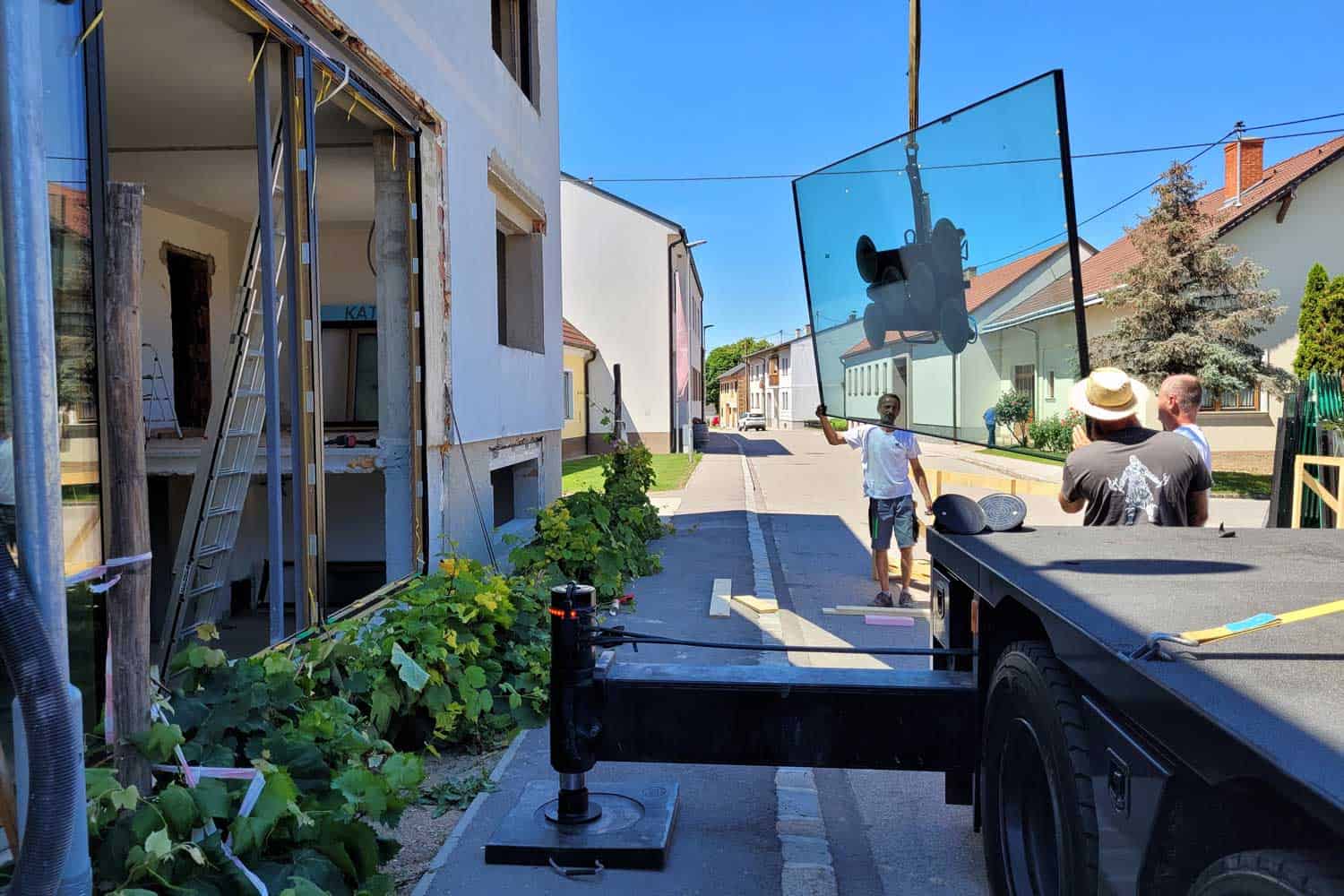While nature is bursting into life, the next highlight is also happening in Milchhausstrasse: The new windows have been delivered! An important step towards a modern tasting area, we are very pleased.



WINE BY S. PRATSCH
Milchhausstrasse 5, 2223 Hohenruppersdorf im Weinviertel, Austria
+43 676 62 49 773
office@pratsch.at
born in 1985
Early ony it became clear that Stefan Pratsch would take over his parents' winery. After a solid theoretical education at the Mistelbach School of Viticulture, he learnt the ropes in his parents' traditional business. Then it was time to find out and perfect his own path.
The parents Willi and Anneliese Pratsch, wife Bernadette, partners and friends and, above all, the feedback from the many customers have helped to ensure that the endeavour was crowned with success. An important milestone was the extraordinarily positive response to the wines in the U.S. and Scandinavia. Today, Stefan Pratsch's wines enjoy great popularity worldwide.
The character of the soil is a reflection of the wine that grows on it. The uniqueness of the grapes can only come to the fore in a soil full of life. For Stefan Pratsch, it is therefore immensely important to keep the soil healthy and to support the diversity of vegetation in the vineyard. Organic is a must here!
The wine needs time to mature. The grapes - fully ripe on the vine - bring the yeast for spontaneous fermentation with them from the vineyard and the young wine remains in contact with the yeast for as long as possible. This is the only way to create the fresh and nuanced wines that we love so much. The gentle and responsible vinification of the grapes means that hardly any histamines are formed, which makes the wines easy to digest and ensures exceptional enjoyment.
Only as much sulphur is used as is necessary to preserve the wine as a valuable foodstuff. This guarantees the long-lasting freshness and extended shelf life of the wine. Animal products have no place in wine. By using pea and potato products instead of gelatine, for example, Stefan Pratsch's wines are fully compatible with a vegan diet.
organic for 30 years
Situated to the east of the Hohenruppersdorf church tower, the Ried Rotenpüllen is a sunny location due to its south-facing orientation. While working in the vineyard, you can enjoy the marvellous view of the Carpathian Mountains. Compared to other sites in Hohenruppersdorf, the night-time cooling at the lowest point of the site is significantly stronger. Consisting of a red gravel mix, loess, loam and limestone soils, this site is characterised by its high minerality.
To the north of Rotenpüllen is the Ried Steinberg. Most of its slopes face north - from where you can ideally observe the "Weinviertel sea of wind turbines". The Steinberg is the winery's most mineral-rich site, with a mixture of gravel, (calcareous sand) stone and clay.
The Erdpress reed is located in the south of Hohenruppersdorf and, in contrast to the other reeds, is a rather flat plateau. It is characterised by very humus-rich, deep soils interspersed with black earth.
To the south (east) of Hohenruppersdorf is the "Kittel" - another very sun-favoured location that offers a magnificent view of the "Matzner Wald" forest. The soil here is very dry and compact, interspersed with gravel, sand, clay, loam and also limestone and shell rock.
The great-grandfather's favourite vineyard is home to what is now the estate's largest site - the Heiligenberg. Its name is steeped in history: While it is still walked by pilgrims on their way to Mikulov today, in the Middle Ages the last prayer was said from the Galgenberg in the direction of Heiligenberg. The soils of the Heiligenberg include the loess, loam and humus-rich layers typical of the Weinviertel. Facing south and exposed to the winds of the region, this location offers ideal conditions for the cultivation of white wine varieties typical of the region.
Pfarracker am Heiligenberg is the highest vineyard on the estate and thus a particularly airy site in the north-east of the village. Due to very bulky, dark and compact soil layers, especially in the deeper subsoil, the yields in this location are consistently low.

